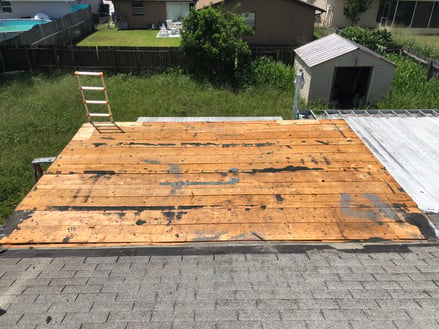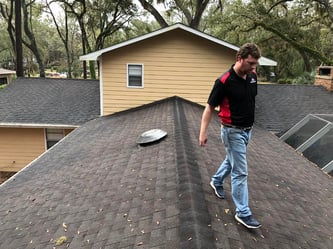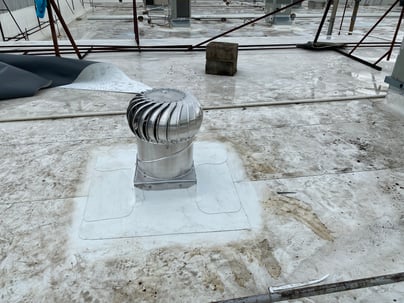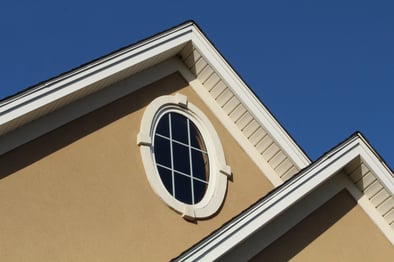
Much like a person, your roof is a complicated creature made up of many different parts. They’re all unique to your roof specifically, and each plays a special role in keeping your home, your family, and your belongings safe from outside conditions. Many homeowners don’t realize that their roofs are made up of more than just shingles. There’s an entire science behind its structure.
Unlike people, your roof doesn’t have a beating heart, blood, or veins. If it does, I’d consider contacting your local exorcist. However, for those with a standard roof, it still has its anatomy just like we do. Its anatomy can vary from roof to roof just as from person to person, but it will always maintain the same general structure.
At RoofCrafters, we’ve been installing roofs for homeowners like you for nearly 30 years. Over the past 3 decades, we’ve worked on roofs of all different shapes, colors, and sizes, but each roofing system still adheres to the same anatomical structure, which we’d like to share with you today.
If you’re interested in a new roof, in need of a roof repair, or are simply just curious about the different parts of your roof, you’re in the right place. In this article, you’ll learn about the 9 different components that make up your roof, and why each part is important to the entire structure of your roof. Let’s get started!
What Components Make Up My Roof?
Each layer of your roof plays a different part in protecting your home. Your roof is made up of several different components, including:
- Drip edge
- Roof deck
- Roof underlayment
- Roof ridge
- Eave
- Ventilation
- Roof valley
- Roof gable
- Shingles
Drip Edge
A drip edge is a piece of metal, usually copper, aluminum, or steel, designed to protect your roof from water damage. It is installed at the edge and underside of your roof, hence the name, and hangs over the sides of your roof. It's intentionally designed in a bent shape to allow any water to flow away from your roof and fascia.
Drip edges help to prevent erosion of the fascia board by keeping it mostly dry and preventing water from entering under the roof and into the roof deck. Drip edges are a great asset to your roof because they are incredibly durable and can withstand harsh weather conditions. Not only are they waterproof, but they’re intended to be made from non-corrosive, stainless material.
Roof Deck
The roof deck is the wooden board that makes up the framing of your roof; Think of it like the roof's skeletal system. The roof deck is a critical part of your roof and should be inspected regularly to ensure it remains in good working condition.

If your roof deck is damaged or rotting, putting new shingles on top of the boards risks not only the entire structure of your roof but your home as well. Your new roofing material can be damaged as well, and won’t function properly which will decrease the longevity of your roof. If all else fails, always make sure your roof deck is healthy.
Roof Underlayment
Roof underlayment is a water-resistant, waterproof material that is directly placed on the roof deck. Underlayment gets put down before any other material. It acts as a barrier that protects the roof deck as well as the rest of your home from any potential leaks from harsh weather conditions. Depending on where you live, every roof should have a strong underlayment to stay intact from strong wind gusts, rain, snow, leaks, and water damage.
 Roof Ridge
Roof Ridge
The roof ridge is the horizontal line that runs along the length of the roof where the two roof planes meet. That meeting point, or intersection, creates the highest point of the roof, which is often referred to as the roof peak. Ridge and hip shingles are designed specifically for the ridge of the roof.
Eave
The area where you see your roof extends a small distance past the wall of your home is referred to as the eaves. This is an essential feature of your roof and prevents things such as potential water from entering the structure, as well as evading nesting animals. Eaves are designed to extend past the sides of your home as means of distributing and supporting the load of the roof more evenly.
Ventilation
Roofing ventilation systems are designed around the fact that anywhere you go, if you’re on Earth, that is, warm air rises. The same thing happens within your home. This is the reason why basements are generally cooler, and the upstairs rooms and attic tend to be warmer.
During the heat of the summer months, the sun causes the air within your attic to become extremely hot. Your air conditioning inside the home will help to cool this hot air down. Vice versa, in the winter months, the cool air trapped in your attic will be heated by the temperature from the inside of your home.

During either season, a good ventilation system will allow the cool air, either coming naturally from outside or inside from your AC, to enter the attic near the eaves (edge or overhang of your roof) and exit near the peak. Traditionally, some of the vent areas will be lower, and the rest will be higher.
Roof Valley
The roof valley is the place where the two slopes of your roof meet, essentially forming a “valley”. The purpose of the roof valley is to flow any collected water off of your roof. Valley installation is critical to the longevity of your roof, and if installed improperly, you’re at risk for some serious roof leaks.
Roof Gable
The roof gable is a triangular portion of the roof between the edges of the intersecting pitches. The gables' shape and detail depending on the structural system of the roof will vary from home to home factoring in the material, climate, and aesthetics.
Shingles
Asphalt shingles are a type of waterproof roofing material. Its relatively inexpensive cost in addition to its longevity and durability makes it the most popular type of roofing in North America. Asphalt shingles come in numerous styles and colors and would be the perfect addition to any home.
These shingles are made up of a base mat on the bottom, a layer of waterproof asphalt in the middle, and ceramic granules on top. The granules are what provide these shingles with the many different colors that you see on your or your neighbors’ homes.
Are You Ready for Your New Roof?
Roof installations and repairs can be stressful and confusing, especially if you’re unsure of the parts of your roof that need work, and what the purpose they serve is. Now that you know the components that make up the structure of your roof, you’re more than prepared for your next roofing project.
If you’re eager to begin your new roof journey, drop RoofCrafters a line on our contact page. One of our friendly representatives will reach out to you and schedule your inspection at your earliest convenience. The first one’s on us! In the meantime, feel free to browse through the extensive resources located in our learning center. We recommend reading “Can I Finance My Roofing Project?” so that you can be better prepared for the upfront costs of your project.
At RoofCrafters, our mission is to provide job opportunities for others to thrive and grow while making a meaningful impact within our communities.




